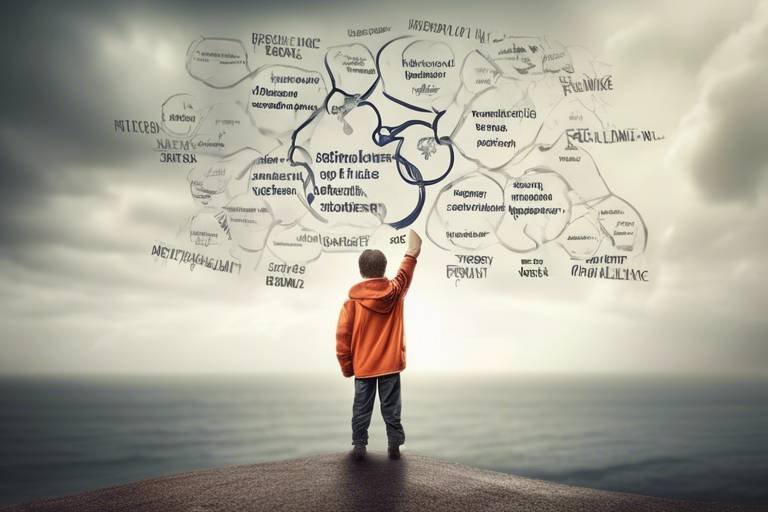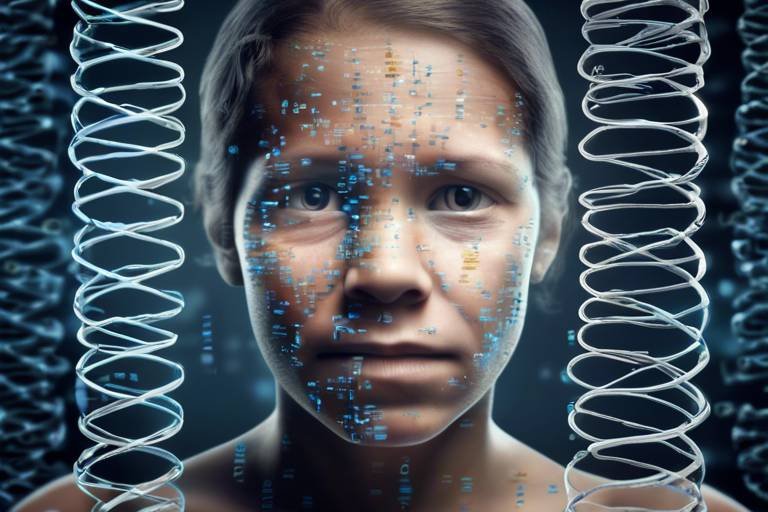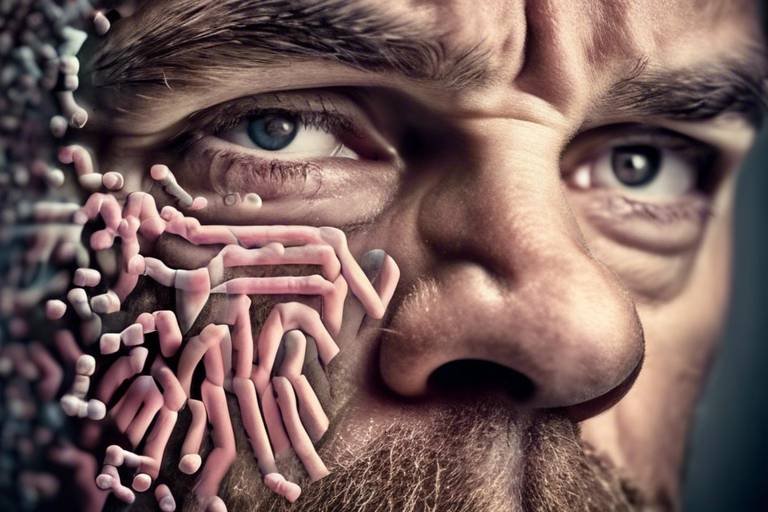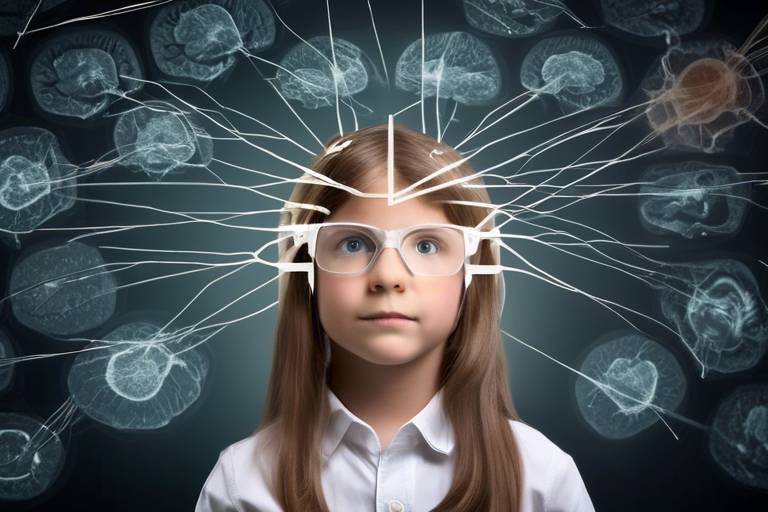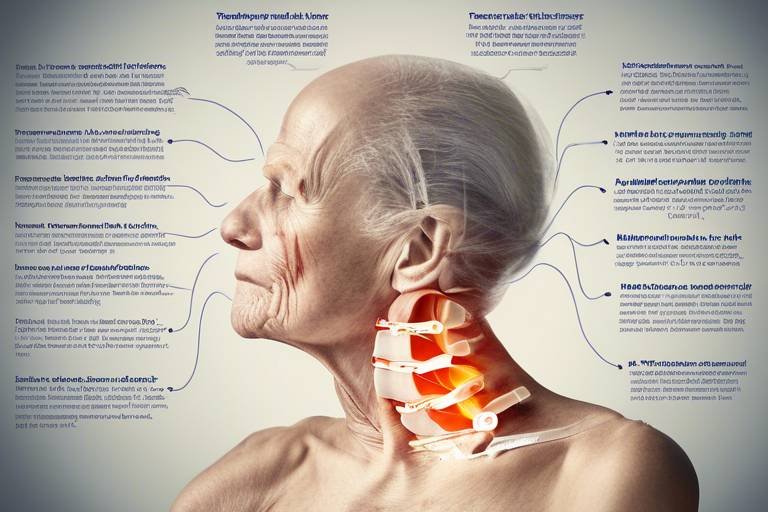How Advances in Neuroscience are Shaping Our Understanding of Addiction
In recent years, the field of neuroscience has made remarkable strides, shedding light on the complex and often misunderstood phenomenon of addiction. This article dives deep into how these scientific advancements are reshaping our understanding of addiction, revealing the intricate workings of the brain, the role of genetics, and innovative treatment approaches. The brain, that enigmatic organ, is at the heart of addiction, and understanding its mechanisms can help us unravel the mysteries behind addictive behaviors.
Imagine your brain as a bustling city, with various pathways acting like roads connecting different neighborhoods. Each neighborhood has its own unique characteristics, and in addiction, the most critical areas are those involved in reward and decision-making. Neuroscience has uncovered that certain neural pathways, particularly those related to the brain's reward system, become hijacked by addictive substances or behaviors. This hijacking can lead to compulsive actions, where individuals may prioritize their addiction over everything else in their lives, much like a city that has lost its way due to a massive traffic jam.
Furthermore, the relationship between genetics and addiction susceptibility is akin to a game of chance. Some individuals may inherit a genetic predisposition that makes them more vulnerable to addiction, while others may not. This genetic lottery can significantly affect how individuals respond to substances and their overall risk of developing substance use disorders. Understanding these genetic factors is crucial, as it opens doors to personalized treatment approaches, where interventions can be tailored to an individual’s unique genetic makeup.
But it doesn’t stop there. The field of epigenetics adds another layer of complexity to our understanding of addiction. Think of epigenetics as the conductor of an orchestra, guiding how genes express themselves in response to environmental cues. Stressful environments, social influences, and even early life experiences can trigger epigenetic changes that heighten addiction vulnerability. This means that while your genetic predisposition plays a role, the context in which you live can dramatically influence your risk for developing addictive behaviors.
As we delve deeper, it becomes clear that environmental triggers can activate these epigenetic mechanisms, leading to a cycle of addiction that can be incredibly difficult to break. For instance, someone recovering from addiction might find themselves in a situation where they are exposed to old friends or places associated with their substance use, reigniting cravings and potentially leading to relapse. This highlights the importance of understanding the context in which addiction develops and persists.
On the brighter side, targeting these epigenetic modifications presents exciting new avenues for intervention. Imagine being able to alter the very factors that contribute to addiction risk, much like adjusting the settings on a complicated machine to improve its performance. Researchers are exploring various therapeutic approaches that aim to modify epigenetic factors, potentially offering new hope for those struggling with addiction.
In addition to genetic and epigenetic factors, neurotransmitter systems play a pivotal role in the brain's reward circuitry. Neurotransmitters, the chemical messengers of the brain, are crucial for regulating mood, pleasure, and motivation. When these systems are out of balance, cravings and addictive behaviors can spiral out of control. Understanding how neurotransmitters function can lead to more effective treatment strategies, as researchers develop medications that target specific neurotransmitter systems to help restore balance in the brain.
In conclusion, the advances in neuroscience are revolutionizing our understanding of addiction. By exploring the neurobiology, genetic factors, and innovative treatment methods, we are beginning to see a more comprehensive picture of this complex issue. As we continue to uncover the mysteries of the brain, we can hope for more effective strategies to combat addiction, paving the way for recovery and a brighter future for those affected.
- What is addiction? Addiction is a chronic condition characterized by compulsive substance use or behaviors despite harmful consequences.
- How does neuroscience help in understanding addiction? Neuroscience explores the brain's structures and functions, revealing how they relate to addictive behaviors and decision-making.
- Can genetics influence addiction? Yes, genetics can play a significant role in an individual's susceptibility to addiction, impacting their risk levels.
- What are epigenetics? Epigenetics refers to changes in gene expression that can be influenced by environmental factors, affecting addiction vulnerability.
- What new treatments are available for addiction? Recent advancements include pharmacological treatments targeting neurotransmitter systems and behavioral therapies informed by neuroscience.

The Neurobiology of Addiction
Understanding the brain's structure and function is crucial in addiction research. The human brain is a complex organ, and when it comes to addiction, it operates like a finely tuned machine that can easily go off track. At the core of this issue are the neural pathways that govern our behaviors and decision-making processes. These pathways are influenced by various factors, including genetics, environment, and experiences, which can alter how we respond to substances and behaviors.
One of the key components in the neurobiology of addiction is the brain's reward system. This system is primarily driven by the neurotransmitter dopamine, which is released during pleasurable activities, such as eating, socializing, or using drugs. When a person engages in an addictive behavior, the brain's reward system becomes overstimulated, leading to a surge of dopamine that creates feelings of euphoria. Over time, repeated exposure to these substances can change the way the brain functions, making it increasingly difficult for individuals to experience pleasure from everyday activities.
As addiction develops, the brain undergoes significant changes that can be categorized into several phases:
- Initiation: The initial exposure to a substance or behavior that triggers the reward system.
- Escalation: Increased consumption or engagement as the brain adapts to the heightened dopamine levels.
- Dependence: The brain begins to rely on the substance or behavior to maintain normal functioning.
- Withdrawal: The absence of the substance leads to physical and psychological symptoms, reinforcing the cycle of addiction.
Neuroscience has also revealed that addiction is not merely a matter of willpower; it's a chronic brain disorder that can alter the very architecture of the brain. For instance, imaging studies have shown that individuals with addiction often have reduced activity in the prefrontal cortex, the area responsible for decision-making and impulse control. This can lead to poor judgment and an inability to resist cravings, even when faced with negative consequences.
Furthermore, addiction can disrupt the brain's neuroplasticity, which is the ability of the brain to reorganize itself by forming new neural connections. This means that the more someone engages in addictive behaviors, the more entrenched those behaviors become, making recovery increasingly challenging. As these pathways solidify, they can overshadow the brain's natural reward systems, leading to a cycle of compulsive behavior.
In summary, the neurobiology of addiction is a complex interplay of brain structures, neurotransmitters, and environmental factors that shape an individual's relationship with substances and behaviors. Understanding these mechanisms is essential for developing effective treatment strategies and fostering long-term recovery.

Genetic Factors in Addiction
When we dive into the world of addiction, it’s easy to think of it as a choice or a lack of willpower. However, the truth is that genetics play a significant role in how individuals experience addiction. Imagine addiction as a complex puzzle, where each piece represents a different factor influencing a person's behavior. Among these pieces, the genetic component is crucial, as it can dictate how susceptible someone is to developing addictive behaviors.
Research indicates that genetics can account for about 40% to 60% of an individual's vulnerability to addiction. This means that if you have a family history of substance abuse, your risk of struggling with addiction may be heightened. But how does this genetic predisposition work? It primarily revolves around specific genes that affect neurotransmitter systems in the brain, particularly those related to dopamine, which is often referred to as the "feel-good" neurotransmitter.
To better understand this, let’s consider some of the key genetic factors involved:
- Dopamine Receptors: Variations in the genes that code for dopamine receptors can influence how the brain responds to rewarding stimuli, making some individuals more prone to seeking out addictive substances.
- Metabolism of Substances: Certain genes affect how quickly or effectively a person metabolizes drugs and alcohol, which can impact their likelihood of developing a dependency.
- Stress Response Genes: Genetic variations that affect an individual's stress response can also play a role in addiction. Those with a heightened stress response may turn to substances as a coping mechanism.
However, it’s essential to note that having a genetic predisposition doesn’t mean someone is destined to become addicted. It’s more like having a loaded gun; the trigger may be pulled by various environmental factors, such as stress, trauma, or social influences. This interplay between genetics and environment is where the concept of epigenetics comes into play, which we will explore further in the next section.
Moreover, understanding these genetic factors not only sheds light on why certain individuals may struggle more than others but also opens doors for targeted interventions. If we can identify specific genetic markers associated with addiction, we can tailor prevention and treatment strategies to suit individual needs. This personalized approach could revolutionize how we treat addiction, making it more effective and compassionate.
In summary, genetics is a vital piece of the addiction puzzle. It helps us comprehend why some people are more susceptible to addiction while others are not. By acknowledging the role of genetics, we can better understand the complexities of addiction and pave the way for more effective treatment solutions.
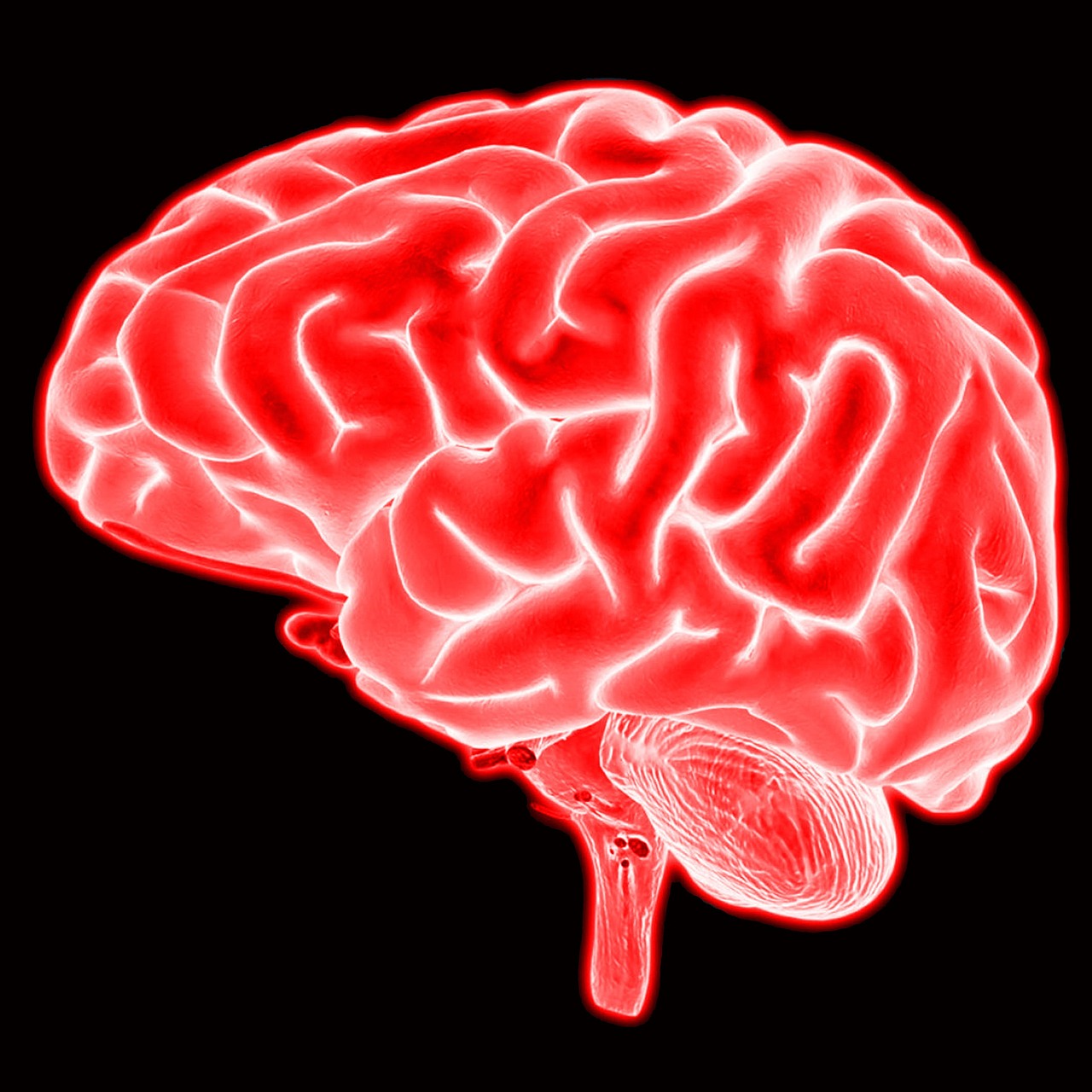
The Role of Epigenetics
Epigenetics, the study of changes in gene expression that do not involve alterations to the underlying DNA sequence, plays a crucial role in our understanding of addiction. It’s fascinating to think about how our environment can influence our genes, almost like a switch that can be turned on or off. This means that while someone may have a genetic predisposition to addiction, their environment can significantly impact whether or not those genes are expressed. Imagine genes as a book; epigenetics is like the bookmark that decides which pages will be read and which will remain closed.
Research has shown that various environmental factors, such as stress, trauma, and even social interactions, can lead to epigenetic changes that increase an individual's vulnerability to addictive behaviors. For instance, a person who grows up in a high-stress environment may experience changes in their epigenome that heighten their risk of developing substance use disorders. This connection between environment and gene expression underscores the complexity of addiction, suggesting that it is not merely a matter of biology but also one of context and experience.
Moreover, these epigenetic modifications can be passed down through generations, creating a cycle of addiction that can perpetuate within families. This is particularly alarming, as it highlights the importance of addressing not only the individual but also the familial and societal contexts in which addiction occurs. For example, if a parent struggles with addiction, the epigenetic changes they experience could potentially be transmitted to their children, increasing the likelihood that those children may also face similar challenges.
One of the most exciting aspects of epigenetics is the potential for intervention. By targeting epigenetic modifications, researchers are exploring new therapeutic approaches that could help to mitigate the risk of addiction. For instance, certain lifestyle changes, like improved nutrition and stress management techniques, have been shown to positively influence epigenetic markers. This means that there is hope for individuals seeking recovery, as altering their environment and behaviors can lead to beneficial changes at the molecular level.
In conclusion, the role of epigenetics in addiction is a promising field of research that opens up new avenues for understanding and treatment. By recognizing the interplay between genes and environment, we can better appreciate the complexities of addiction and work towards more effective strategies for prevention and recovery.

Environmental Triggers
When we think about addiction, we often focus on the substances themselves—drugs, alcohol, or behaviors like gambling. However, the environment plays a crucial role in shaping our susceptibility to addiction. Imagine walking down a street where you used to buy drugs; the sights, sounds, and even smells can trigger memories that reignite cravings. This phenomenon is not just a passing thought; it’s a deeply rooted neurobiological response that can lead to relapse.
Environmental triggers can be anything from a particular location to a specific social setting. For instance, being around friends who use substances can create a powerful urge to join in, even if you’ve been clean for a while. These triggers activate neural pathways associated with reward and pleasure, reminding the brain of the highs experienced during substance use. It’s like having a ghost from the past that whispers sweet nothings, urging you to indulge once more.
Research has shown that environmental cues can lead to significant changes in brain chemistry, particularly in the dopaminergic pathways. These pathways are responsible for the feelings of pleasure and reward, and when activated by triggers, they can lead to cravings that feel almost impossible to resist. The interplay between environment and addiction is complex, and it highlights the importance of understanding context in recovery.
To illustrate this further, consider the following table that outlines common environmental triggers and their potential impact on individuals recovering from addiction:
| Environmental Trigger | Potential Impact |
|---|---|
| Social Gatherings | Increased temptation to use substances |
| Specific Locations | Recall of past usage experiences |
| Stressful Situations | Heightened cravings as a coping mechanism |
| Media Exposure | Normalization of substance use |
Understanding these triggers is essential for anyone on the path to recovery. It’s not just about willpower; it’s about recognizing that our surroundings can profoundly influence our choices and behaviors. By identifying specific triggers, individuals can develop strategies to manage their responses. For example, if a particular location is a trigger, avoiding that area may be a practical step toward maintaining sobriety.
Moreover, creating a supportive environment can significantly improve recovery outcomes. Surrounding oneself with positive influences, engaging in healthy activities, and even altering daily routines can help mitigate the impact of environmental triggers. It’s about building a new life that doesn’t revolve around past habits and associations.
In conclusion, while personal choice plays a role in addiction, we must not underestimate the power of environmental triggers. By acknowledging and addressing these factors, individuals can better navigate their recovery journey, leading to a more sustainable and fulfilling life.
- What are environmental triggers? Environmental triggers are external cues, such as specific places, people, or situations, that can provoke cravings or urges to use substances.
- How can I identify my triggers? Keeping a journal of situations that lead to cravings can help you identify patterns and specific triggers in your environment.
- What can I do to avoid triggers? Strategies include avoiding certain locations, surrounding yourself with supportive people, and engaging in healthy activities that distract from cravings.
- Can triggers change over time? Yes, as you progress in recovery, some triggers may lose their potency, while new ones may emerge. It's important to stay vigilant and adaptable.
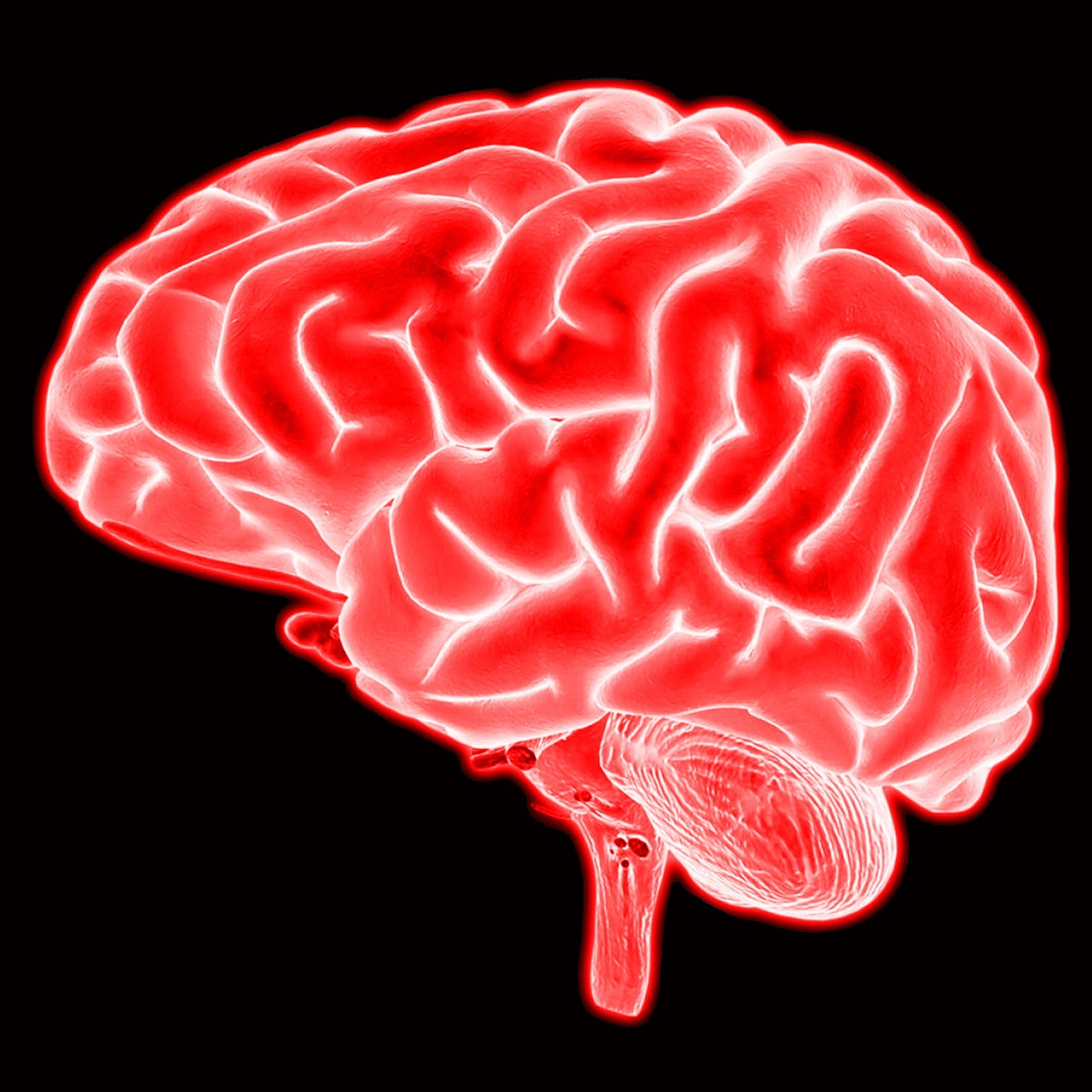
Intervention Strategies
In the quest to combat addiction, are evolving, thanks to our growing understanding of the brain and its mechanisms. One promising area of research focuses on epigenetic modifications. These changes can be influenced by various factors, including lifestyle, environment, and even stress levels. By targeting these modifications, we open up new pathways for treatment that were previously unexplored. Imagine having the ability to “reset” certain aspects of your genetic predisposition to addiction—this is the potential that epigenetic research holds.
For instance, scientists are investigating how certain nutritional interventions can modify gene expression. Foods rich in omega-3 fatty acids have shown promise in reducing cravings and improving mood. This is a fascinating intersection of nutrition and neuroscience that could lead to more holistic treatment approaches. Furthermore, therapies that integrate mindfulness and stress management techniques are being studied for their ability to create a more favorable epigenetic environment for recovery.
Another innovative strategy involves the use of pharmacogenomics, which tailors medication based on an individual's genetic makeup. By understanding how a person’s unique genetic profile affects their response to certain drugs, healthcare providers can prescribe treatments that are more effective and have fewer side effects. This personalized approach not only enhances recovery rates but also minimizes the risk of relapse.
Moreover, behavioral interventions are being refined through neuroscience insights. For example, cognitive-behavioral therapy (CBT) is now being adapted to incorporate techniques that address the brain's reward pathways directly. Therapists are using techniques that focus on retraining the brain to respond differently to addiction triggers. This might involve exposure therapy, where individuals gradually confront their triggers in a controlled environment, allowing them to develop healthier coping mechanisms.
To further illustrate the impact of these interventions, consider the following table that outlines some of the most promising strategies currently being researched:
| Intervention Strategy | Description | Potential Benefits |
|---|---|---|
| Epigenetic Modifications | Targeting changes in gene expression influenced by environmental factors. | Possible reduction in addiction vulnerability. |
| Nutritional Interventions | Utilizing specific diets to influence brain chemistry. | Improved mood and reduced cravings. |
| Pharmacogenomics | Personalized medication based on genetic profiles. | Higher effectiveness and fewer side effects. |
| Behavioral Therapies | Integrating neuroscience insights into traditional therapies. | Enhanced coping mechanisms and reduced relapse rates. |
These intervention strategies not only aim to treat addiction but also focus on preventing its onset. By understanding how our environment and biology interact, we can create a more comprehensive approach to addiction recovery. The future of addiction treatment is not just about addressing the symptoms; it's about understanding the underlying mechanisms and equipping individuals with the tools they need to reclaim their lives.
- What are epigenetic modifications? These are changes in gene expression that do not involve alterations to the DNA sequence itself, often influenced by environmental factors.
- How can nutrition impact addiction recovery? Certain nutrients can influence brain chemistry and mood, potentially aiding in the reduction of cravings and improving mental health.
- What is pharmacogenomics? It is a field of study that examines how genes affect a person's response to drugs, allowing for personalized treatment plans.
- Are behavioral therapies effective for addiction? Yes, when informed by neuroscience, behavioral therapies can significantly enhance recovery outcomes by addressing the psychological aspects of addiction.

Neurotransmitter Systems
The brain is an intricate web of connections, and at the heart of this network are neurotransmitters—chemical messengers that play a pivotal role in how we feel, think, and behave. When it comes to addiction, these neurotransmitter systems are like the orchestra of a symphony, where each instrument contributes to the overall sound. If one instrument is out of tune, the entire performance can falter. This is particularly true when we consider the balance of neurotransmitters such as dopamine, serotonin, and glutamate, which are crucial in regulating our reward pathways.
Dopamine, often dubbed the "feel-good" neurotransmitter, is a key player in the brain's reward system. It’s released during pleasurable activities, reinforcing behaviors that lead to those pleasurable outcomes. However, in the context of addiction, the stakes are raised. Substances like drugs and alcohol can hijack this system, causing an overwhelming release of dopamine that leads to intense feelings of euphoria. This flood of dopamine can create a feedback loop, where the brain begins to crave not just the substance but the high it provides, leading to compulsive use despite negative consequences.
But dopamine isn’t the only neurotransmitter in the game. Serotonin, which helps regulate mood, anxiety, and happiness, can also influence addiction. Low levels of serotonin are often linked to mood disorders, which can increase the likelihood of substance use as individuals seek to self-medicate their emotional pain. Similarly, glutamate, the primary excitatory neurotransmitter, plays a role in learning and memory. In addiction, glutamate's dysregulation can affect how we learn about rewards and consequences, further entrenching addictive behaviors.
To better understand the interplay of these neurotransmitters in addiction, consider the following table that highlights their roles:
| Neurotransmitter | Role in Addiction |
|---|---|
| Dopamine | Reinforces rewarding behaviors, leading to cravings and compulsive use. |
| Serotonin | Regulates mood; low levels can lead to self-medication through substance use. |
| Glutamate | Affects learning and memory; dysregulation can entrench addictive behaviors. |
Understanding these neurotransmitter systems is crucial not only for grasping the mechanics of addiction but also for developing effective treatment strategies. By targeting these neurotransmitter pathways, researchers are exploring new pharmacological interventions that can help restore balance in the brain. For instance, medications that increase serotonin levels might alleviate some of the mood disorders that fuel addiction, while those that modulate dopamine activity could help reduce cravings.
In conclusion, the intricate dance of neurotransmitters in the brain is central to our understanding of addiction. The challenge lies in finding ways to harmonize this orchestra, allowing individuals to regain control over their lives and break free from the chains of addiction. As neuroscience continues to unravel the complexities of these systems, the potential for effective treatments becomes increasingly promising.
- What are neurotransmitters? Neurotransmitters are chemical messengers in the brain that transmit signals between neurons and play a crucial role in regulating mood, behavior, and addiction.
- How does dopamine affect addiction? Dopamine reinforces rewarding behaviors, and its dysregulation can lead to cravings and compulsive substance use.
- Can serotonin levels influence addiction? Yes, low serotonin levels can lead to mood disorders, increasing the risk of self-medication through substance use.
- What role does glutamate play in addiction? Glutamate is involved in learning and memory; its dysregulation can affect how individuals learn about rewards and consequences, entrenching addictive behaviors.

Advancements in Treatment Approaches
In recent years, the field of addiction treatment has witnessed remarkable advancements, driven largely by breakthroughs in neuroscience. These innovations are not just reshaping how we understand addiction but also how we approach its treatment. Imagine a world where recovery isn't just a distant dream but a tangible reality for many. This is becoming increasingly possible thanks to emerging therapies that are tailored to the unique needs of individuals struggling with addiction.
One of the most exciting developments is the integration of pharmacological treatments that specifically target neurotransmitter systems. These medications are designed to restore balance in the brain's chemistry, addressing the underlying biological factors that contribute to addiction. For instance, drugs that enhance the activity of dopamine, a key neurotransmitter involved in the brain's reward system, can help alleviate cravings and reduce the likelihood of relapse. Recent studies have shown that these targeted treatments can significantly improve recovery outcomes, making them a vital component of modern addiction therapy.
Furthermore, behavioral therapies are also evolving, incorporating insights from neuroscience to enhance their effectiveness. Traditional approaches, such as Cognitive Behavioral Therapy (CBT), are now being combined with new techniques that focus on brain function and emotional regulation. This combination not only helps individuals understand their thought patterns but also equips them with practical skills to manage triggers and cravings. By addressing both the psychological and neurological aspects of addiction, these therapies offer a more comprehensive approach to recovery.
To illustrate the advancements in treatment approaches, consider the following table that summarizes some of the key therapies currently making waves in addiction treatment:
| Treatment Type | Description | Effectiveness |
|---|---|---|
| Pharmacological Treatments | Medications targeting neurotransmitter systems to reduce cravings and withdrawal symptoms. | High; especially effective in combination with behavioral therapies. |
| Cognitive Behavioral Therapy (CBT) | Therapy focused on changing negative thought patterns and behaviors related to addiction. | Moderate to High; effective in teaching coping strategies. |
| Motivational Interviewing | A counseling approach that enhances an individual's motivation to change. | High; particularly effective in early stages of treatment. |
| Contingency Management | Incentive-based approach that rewards positive behaviors, such as sobriety. | Moderate; can be highly effective in promoting short-term abstinence. |
Moreover, the role of technology in treatment cannot be overlooked. Digital platforms and mobile applications are increasingly being utilized to provide support and resources to individuals in recovery. These tools can offer everything from virtual therapy sessions to mindfulness exercises, making treatment more accessible than ever before. Imagine being able to reach out for help with just a few taps on your smartphone—this is the future of addiction recovery.
As we move forward, the importance of a personalized approach to treatment cannot be overstated. What works for one person may not work for another, and recognizing this is key to successful recovery. By leveraging the latest research in neuroscience, we can develop individualized treatment plans that consider a person’s unique genetic, psychological, and environmental factors. This tailored approach not only increases the chances of recovery but also empowers individuals to take control of their healing journey.
In conclusion, the advancements in treatment approaches for addiction are not just promising—they are transformative. With a combination of pharmacological innovations, enhanced behavioral therapies, and the integration of technology, we are on the brink of a new era in addiction recovery. The future looks bright, and with continued research and development, we can hope for a world where addiction is not a life sentence but a challenge that can be overcome.
- What are the most effective treatment methods for addiction?
Effective methods include pharmacological treatments, behavioral therapies, and motivational interviewing, often used in combination for the best results. - How does neuroscience influence addiction treatment?
Neuroscience provides insights into the brain's functioning, allowing for the development of targeted therapies that address the biological underpinnings of addiction. - Can technology aid in addiction recovery?
Yes, digital platforms and mobile apps can provide support, resources, and therapy options, making recovery more accessible. - Is personalized treatment important?
Absolutely! Tailoring treatment to an individual’s unique needs significantly increases the likelihood of successful recovery.

Pharmacological Treatments
When it comes to tackling addiction, pharmacological treatments are like the secret weapons in a superhero's arsenal. These medications are designed to target specific neurotransmitter systems in the brain, helping to restore balance and reduce cravings. Imagine your brain as a finely tuned orchestra; when one instrument goes out of tune, the entire symphony can sound off. That's what happens with addiction—certain neurotransmitters become imbalanced, leading to compulsive behaviors and intense cravings for substances.
Recent advancements in neuroscience have paved the way for a variety of innovative pharmacological interventions. For instance, medications such as buprenorphine and methadone are used to treat opioid addiction by acting on the same receptors in the brain that opioids do, but in a safer and more controlled manner. These treatments not only help alleviate withdrawal symptoms but also reduce the euphoric effects of opioids, making it less likely for individuals to relapse.
Moreover, naltrexone is another groundbreaking medication that blocks the effects of opioids and alcohol, making it an excellent choice for individuals battling addiction to these substances. It’s like putting a lock on the door to the pleasure center of the brain—essentially preventing the substance from providing its usual high. This can significantly decrease the likelihood of relapse and help individuals focus on their recovery journey.
But that’s not all! The world of pharmacological treatments is continuously evolving. Researchers are exploring the potential of anti-craving medications such as acamprosate and topiramate, which work by stabilizing the chemical balance in the brain and reducing the urge to use substances. These medications serve as a bridge, allowing individuals to regain control over their lives while their brain chemistry stabilizes.
To better understand the landscape of pharmacological treatments, let’s take a look at a brief comparison of some key medications:
| Medication | Type of Addiction | Mechanism of Action |
|---|---|---|
| Buprenorphine | Opioid | Partial agonist at opioid receptors |
| Methadone | Opioid | Full agonist at opioid receptors |
| Naltrexone | Opioid & Alcohol | Opioid receptor antagonist |
| Acamprosate | Alcohol | Stabilizes neurotransmitter balance |
| Topiramate | Alcohol | Modulates neurotransmitters |
As promising as these pharmacological treatments are, it's crucial to remember that they are most effective when used in conjunction with comprehensive behavioral therapies. Think of it like a two-pronged approach: while medications help manage the physical cravings and withdrawal symptoms, therapy addresses the underlying psychological factors that contribute to addiction. This holistic approach increases the chances of long-term recovery and helps individuals rebuild their lives.
In conclusion, pharmacological treatments represent a significant leap forward in our fight against addiction. By leveraging our understanding of the brain's chemistry, we can develop targeted interventions that not only ease the burden of withdrawal but also empower individuals on their path to recovery. As neuroscience continues to advance, we can expect even more effective treatments to emerge, offering hope to countless individuals seeking a way out of addiction.
- What are pharmacological treatments? These are medications designed to help manage addiction by targeting specific neurotransmitter systems in the brain.
- How effective are these treatments? When combined with behavioral therapies, pharmacological treatments can significantly reduce cravings and improve recovery outcomes.
- Are there any side effects? Like all medications, pharmacological treatments can have side effects, which should be discussed with a healthcare provider.
- Can anyone use these medications? Not everyone is a candidate for pharmacological treatments; a thorough assessment by a medical professional is necessary.

Behavioral Therapies
Behavioral therapies have become a cornerstone in the treatment of addiction, offering a structured approach to help individuals reclaim their lives from the grips of substance use disorders. These therapies are grounded in the understanding that addiction is not merely a physical dependence but a complex interplay of psychological and social factors. By addressing these dimensions, behavioral therapies aim to modify the patterns of thinking and behavior that contribute to addiction.
One of the most effective forms of behavioral therapy is Cognitive Behavioral Therapy (CBT). This approach helps individuals identify and challenge negative thought patterns that lead to substance use. For instance, someone might believe that they need alcohol to socialize. Through CBT, they learn to reframe this thought, recognizing that socializing can be enjoyable without substances. This process not only empowers individuals but also equips them with practical coping strategies to handle triggers and cravings.
Moreover, Motivational Interviewing is another powerful tool in the arsenal of behavioral therapies. It focuses on enhancing an individual's motivation to change by exploring their ambivalence towards addiction. Rather than confronting the individual with the consequences of their behavior, therapists engage them in a collaborative dialogue that helps them articulate their reasons for wanting to change. This method fosters a sense of ownership over the recovery process, which can significantly enhance commitment to treatment.
Another significant aspect of behavioral therapies is the incorporation of contingency management, which uses positive reinforcement to encourage sobriety. This approach rewards individuals for maintaining sobriety or achieving treatment goals, thus creating a tangible incentive for change. For example, someone may receive vouchers for attending therapy sessions or passing drug tests, reinforcing their commitment to recovery.
Furthermore, group therapy sessions provide a supportive environment where individuals can share their experiences and learn from one another. These sessions often foster a sense of community, reducing feelings of isolation that many individuals with addiction face. By hearing others' stories, participants can gain insights into their own struggles and discover new coping mechanisms. The power of shared experiences can be profoundly transformative.
As we delve deeper into the neuroscience of addiction, it becomes clear that behavioral therapies are not just about addressing the symptoms of addiction; they are about reshaping the brain's response to addictive behaviors. Research indicates that consistent engagement in these therapies can lead to lasting changes in brain function, promoting resilience against relapse. Thus, the integration of neuroscience into behavioral therapies enhances their effectiveness, making them a vital component of comprehensive addiction treatment.
In conclusion, behavioral therapies offer a multifaceted approach to addiction recovery. By addressing cognitive patterns, enhancing motivation, providing incentives, and fostering community support, these therapies help individuals navigate the complex journey of recovery. As neuroscience continues to evolve, the future of behavioral therapies looks promising, paving the way for even more effective treatment strategies that can help individuals reclaim their lives.
- What are behavioral therapies? Behavioral therapies are psychological treatments that aim to change patterns of thinking and behavior associated with addiction.
- How effective are behavioral therapies in treating addiction? Research shows that behavioral therapies can significantly reduce substance use and improve recovery outcomes when integrated with other treatment modalities.
- What is Cognitive Behavioral Therapy (CBT)? CBT is a type of behavioral therapy that helps individuals identify and change negative thought patterns related to their addiction.
- Can behavioral therapies be used alongside medications? Yes, combining behavioral therapies with pharmacological treatments often results in better outcomes for individuals in recovery.
Frequently Asked Questions
- What is the neurobiology of addiction?
The neurobiology of addiction refers to the study of how the brain's structure and function contribute to addictive behaviors. It involves understanding the neural pathways that are activated when an individual engages in substance use or addictive behaviors, and how these pathways influence decision-making and reward processing.
- How do genetic factors influence addiction?
Genetic factors play a significant role in determining an individual's susceptibility to addiction. Certain genetic predispositions can increase the likelihood of developing addictive behaviors or substance use disorders, highlighting the importance of understanding one's family history in the context of addiction.
- What is the role of epigenetics in addiction?
Epigenetics involves changes in gene expression that are not caused by alterations in the DNA sequence. Environmental factors, such as stress or exposure to substances, can trigger epigenetic modifications that may increase vulnerability to addiction. This means that our surroundings can literally change how our genes function, impacting our risk for addiction.
- How do environmental triggers affect addictive behaviors?
Environmental triggers, like specific locations, social situations, or even certain scents, can activate epigenetic mechanisms that lead to cravings and addictive behaviors. Understanding these triggers is crucial for developing effective treatment strategies, as they can significantly influence an individual's recovery journey.
- What are some innovative treatment approaches for addiction?
Recent advancements in neuroscience have paved the way for innovative treatment methods, including pharmacological treatments that target specific neurotransmitter systems and behavioral therapies that incorporate neuroscience principles. These approaches aim to address the underlying brain mechanisms involved in addiction, enhancing recovery outcomes.
- What types of pharmacological treatments are available?
Pharmacological treatments for addiction include medications that target neurotransmitter systems involved in the brain's reward pathways. These medications can help reduce cravings, alleviate withdrawal symptoms, and support long-term recovery by stabilizing brain chemistry.
- How do behavioral therapies contribute to addiction recovery?
Behavioral therapies are essential components of addiction treatment, focusing on modifying harmful behaviors and thought patterns. By incorporating insights from neuroscience, these therapies can be tailored to individual needs, making them more effective in promoting lasting recovery and preventing relapse.



